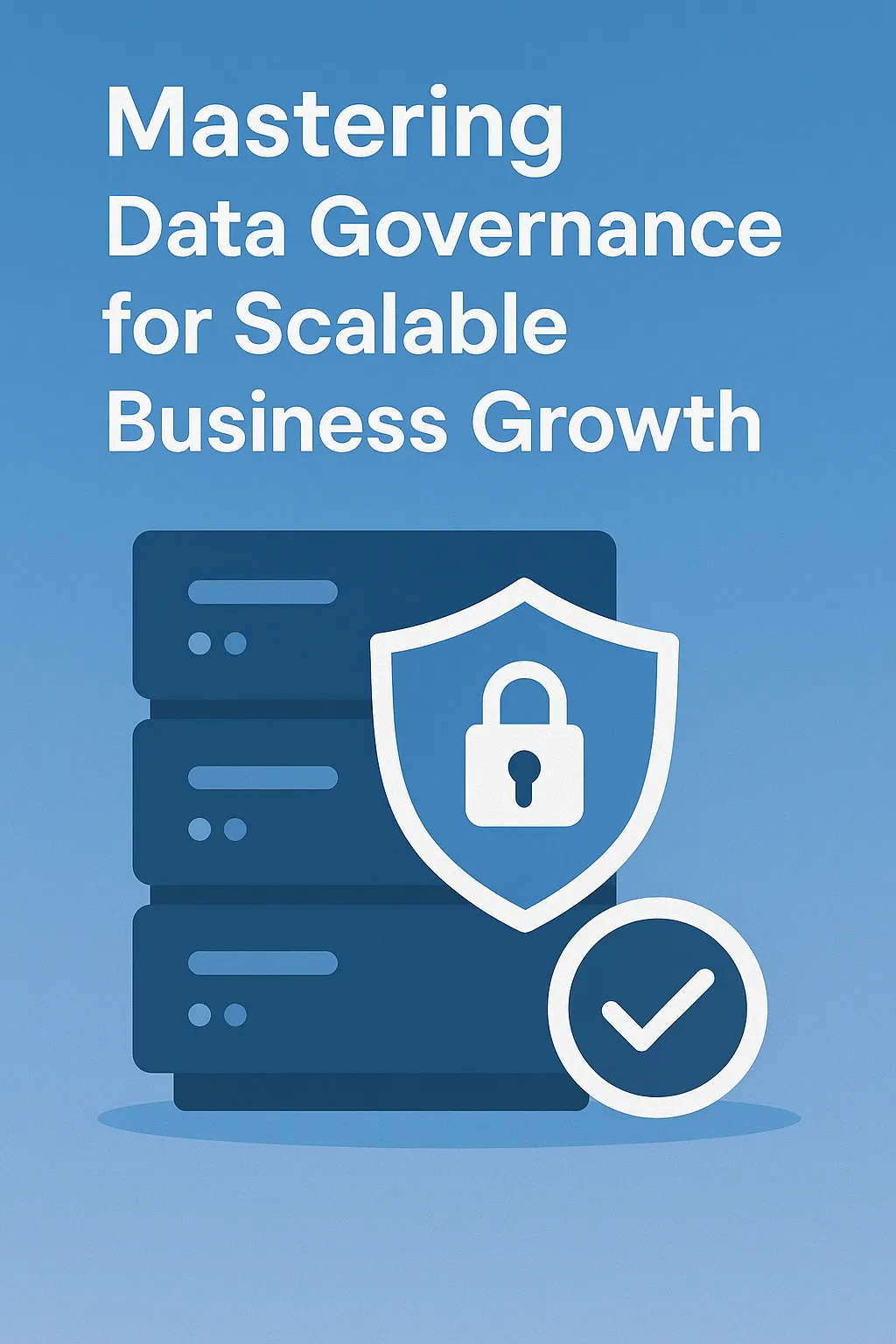Introduction
Data is one of the most valuable assets in any modern business. But without proper structure and control, data can quickly become a liability. Data governance provides the foundation to manage data effectively, ensuring accuracy, consistency, security, and usability. For organizations aiming for scalable growth, mastering data governance is no longer optional — it’s essential.What is Data Governance?
- Data governance is the set of policies, procedures, and standards that define how data is managed, used, and protected across an organization.
- It ensures that the right people have the right access to the right data at the right time.
- It includes ownership roles, data quality standards, compliance practices, and security protocols.
Why Data Governance is Crucial for Growth
- Better Decision Making: Clean and trusted data improves analytics and business intelligence.
- Regulatory Compliance: Ensures adherence to privacy laws like GDPR, HIPAA, and others.
- Operational Efficiency: Reduces data duplication, inconsistencies, and manual corrections.
- Improved Customer Trust: Secure and accurate data handling boosts customer confidence.
Core Components of a Data Governance Framework
- Data Ownership: Assigning data stewards responsible for quality and usage.
- Data Quality: Policies to ensure data is accurate, complete, and current.
- Metadata Management: Documenting where data comes from, its format, and how it’s used.
- Data Security: Defining who can access what data and how it’s protected.
- Compliance: Ensuring all data practices align with internal and legal regulations.
Steps to Implement Effective Data Governance
- Define Objectives: Understand your data goals and how governance supports them.
- Form a Data Governance Team: Include IT, compliance, business, and analytics stakeholders.
- Create Policies and Guidelines: Standardize naming conventions, access controls, and update cycles.
- Implement Tools: Use data catalogs, dashboards, and monitoring software.
- Train Staff: Educate employees on responsible data handling and their governance roles.
How Data Governance Supports Scalability
- Consistent Data Across Systems: Standardized data improves system integration and automation.
- Faster Onboarding: New teams and systems get aligned quickly with clear data policies.
- Predictable Performance: Reliable data enables forecasting and long-term planning.
Challenges in Data Governance
- Resistance to Change: Staff may resist new rules or see governance as an obstacle.
- Data Silos: Isolated systems make centralized control difficult.
- Lack of Ownership: Without accountability, data issues go unresolved.
- Complex Toolsets: Managing governance tools requires expertise and coordination.
Tools That Support Data Governance
- Data Catalogs: For documenting and discovering data assets.
- Access Management Systems: For defining roles and permissions.
- ETL Pipelines: For controlling the flow of data across systems.
- Monitoring Tools: To detect anomalies, breaches, and inconsistencies.
Conclusion
- Data governance is the backbone of digital transformation and growth.
- It enables trust in data, enhances collaboration, and sets the stage for innovation.
- By investing in governance now, businesses can scale confidently and compliantly into the future.
